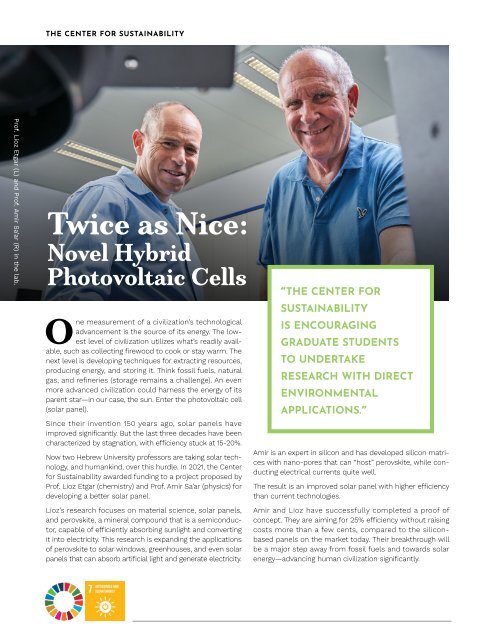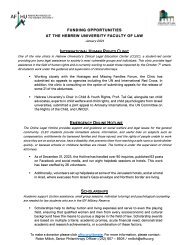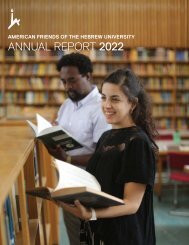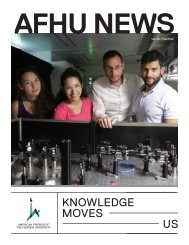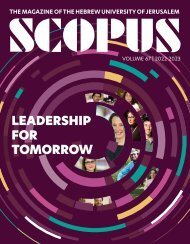Scopus Magazine 2023
Create successful ePaper yourself
Turn your PDF publications into a flip-book with our unique Google optimized e-Paper software.
The Center for Sustainability<br />
Prof. Lioz Etgar (L) and Prof. Amir Sa’ar (R) in the lab.<br />
Twice as Nice:<br />
Novel Hybrid<br />
Photovoltaic Cells<br />
One measurement of a civilization’s technological<br />
advancement is the source of its energy. The lowest<br />
level of civilization utilizes what’s readily available,<br />
such as collecting firewood to cook or stay warm. The<br />
next level is developing techniques for extracting resources,<br />
producing energy, and storing it. Think fossil fuels, natural<br />
gas, and refineries (storage remains a challenge). An even<br />
more advanced civilization could harness the energy of its<br />
parent star—in our case, the sun. Enter the photovoltaic cell<br />
(solar panel).<br />
Since their invention 150 years ago, solar panels have<br />
improved significantly. But the last three decades have been<br />
characterized by stagnation, with efficiency stuck at 15-20%.<br />
Now two Hebrew University professors are taking solar technology,<br />
and humankind, over this hurdle. In 2021, the Center<br />
for Sustainability awarded funding to a project proposed by<br />
Prof. Lioz Etgar (chemistry) and Prof. Amir Sa’ar (physics) for<br />
developing a better solar panel.<br />
“ THE CENTER FOR<br />
SUSTAINABILITY<br />
IS ENCOURAGING<br />
GRADUATE STUDENTS<br />
TO UNDERTAKE<br />
RESEARCH WITH DIRECT<br />
ENVIRONMENTAL<br />
APPLICATIONS. ”<br />
Amir is an expert in silicon and has developed silicon matrices<br />
with nano-pores that can “host” perovskite, while conducting<br />
electrical currents quite well.<br />
The result is an improved solar panel with higher efficiency<br />
than current technologies.<br />
Lioz’s research focuses on material science, solar panels,<br />
and perovskite, a mineral compound that is a semiconductor,<br />
capable of efficiently absorbing sunlight and converting<br />
it into electricity. This research is expanding the applications<br />
of perovskite to solar windows, greenhouses, and even solar<br />
panels that can absorb artificial light and generate electricity.<br />
Amir and Lioz have successfully completed a proof of<br />
concept. They are aiming for 25% efficiency without raising<br />
costs more than a few cents, compared to the siliconbased<br />
panels on the market today. Their breakthrough will<br />
be a major step away from fossil fuels and towards solar<br />
energy—advancing human civilization significantly.


